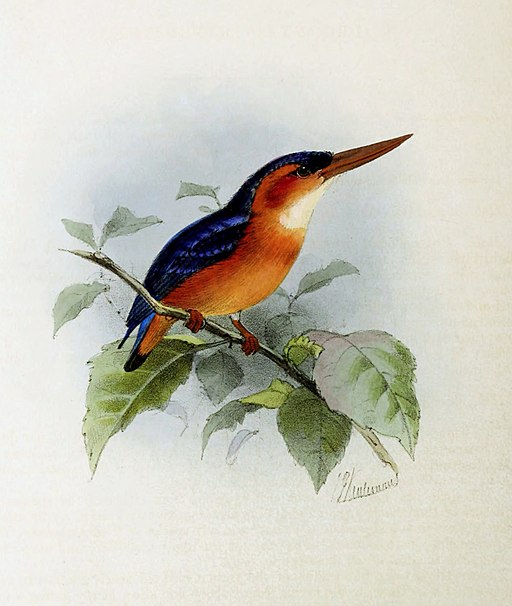Superregnum: Eukaryota
Cladus: Unikonta
Cladus: Opisthokonta
Cladus: Holozoa
Regnum: Animalia
Subregnum: Eumetazoa
Cladus: Bilateria
Cladus: Nephrozoa
Superphylum: Deuterostomia
Phylum: Chordata
Subphylum: Vertebrata
Infraphylum: Gnathostomata
Megaclassis: Osteichthyes
Cladus: Sarcopterygii
Cladus: Rhipidistia
Cladus: Tetrapodomorpha
Cladus: Eotetrapodiformes
Cladus: Elpistostegalia
Superclassis: Tetrapoda
Cladus: Reptiliomorpha
Cladus: Amniota
Classis: Reptilia
Cladus: Eureptilia
Cladus: Romeriida
Subclassis: Diapsida
Cladus: Sauria
Infraclassis: Archosauromorpha
Cladus: Crurotarsi
Divisio: Archosauria
Cladus: Avemetatarsalia
Cladus: Ornithodira
Subtaxon: Dinosauromorpha
Cladus: Dinosauriformes
Cladus: Dracohors
Cladus: Dinosauria
Ordo: Saurischia
Cladus: Eusaurischia
Subordo: Theropoda
Cladus: Neotheropoda
Cladus: Averostra
Cladus: Tetanurae
Cladus: Avetheropoda
Cladus: Coelurosauria
Cladus: Tyrannoraptora
Cladus: Maniraptoromorpha
Cladus: Maniraptoriformes
Cladus: Maniraptora
Cladus: Pennaraptora
Cladus: Paraves
Cladus: Eumaniraptora
Cladus: Avialae
Infraclassis: Aves
Cladus: Euavialae
Cladus: Avebrevicauda
Cladus: Pygostylia
Cladus: Ornithothoraces
Cladus: Ornithuromorpha
Cladus: Carinatae
Parvclassis: Neornithes
Cohors: Neognathae
Cladus: Neoaves
Ordo: Coraciiformes
Familia: Alcedinidae
Subfamilia: Alcedininae
Genus: Ispidina
Species: Ispidina lecontei
Subspecies: I. l. lecontei – I. l. ruficeps
Name
Ispidina lecontei Cassin, 1856
Synonyms
Ceyx lecontei
References
Proceedings of the Academy of Natural Sciences of Philadelphia 8: 158.
Vernacular names
čeština: Ledňáček nejmenší
Deutsch: Braunkopf-Zwergfischer
English: African Dwarf Kingfisher
español: Martín pigmeo del Congo
français: Martin-pêcheur à tête rousse
Türkçe: Cüce yalıçapkını
The African dwarf kingfisher (Ispidina lecontei) is a species of kingfisher in the Alcedininae subfamily.
Taxonomy
The African dwarf kingfisher was described in 1856 by the American ornithologist John Cassin from a specimen collected by Paul Du Chaillu. Cassin introduced the current binomial name Ispidina lecontei. The specific epithet was chosen in honour of the entomologist John Lawrence LeConte.[3]
There are two subspecies:[4]
I. l. ruficeps Hartlaub, 1857 – Sierra Leone to Ghana, west of the Dahomey gap in the rainforest.[5][6]
I. l. lecontei Cassin, 1856 – south Nigeria to west South Sudan, Uganda and central Democratic Republic of the Congo; central Angola.[5]
Description
This is the world's smallest kingfisher with a length of 10 centimetres (3.9 in) and a weight of 9–12 grams (0.32–0.42 oz).[7]
Distribution
It inhabits African rainforests and is found in Angola, Cameroon, Central African Republic, Republic of the Congo, Democratic Republic of the Congo, Ivory Coast, Equatorial Guinea, Gabon, Ghana, Guinea, Liberia, Nigeria, Sierra Leone, South Sudan, and Uganda. [1]
References
Wikimedia Commons has media related to Ispidina lecontei.
Wikispecies has information related to Ispidina lecontei.
BirdLife International (2016). "Ispidina lecontei". IUCN Red List of Threatened Species. 2016: e.T22683174A92977587. doi:10.2305/IUCN.UK.2016-3.RLTS.T22683174A92977587.en. Retrieved 12 November 2021.
"Dwarf Kingfisher (Ceyx lecontei) (Cassin, 1856)". Biolib.cz. Retrieved December 22, 2012.
Cassin, John (1856). "Descriptions of new species of African birds, in the Museum of Academy of Natural Sciences, of Philadelphia, collected by Mr. P.B. Du Chaillu, in Equatorial Africa". Proceedings of the Academy of Natural Sciences of Philadelphia. 8: 156–159 [158].
Gill, Frank; Donsker, David, eds. (2017). "Rollers, ground rollers & kingfishers". World Bird List Version 7.2. International Ornithologists' Union. Retrieved 17 May 2017.
"Details : African Dwarf Kingfisher - BirdGuides". www.birdguides.com. Retrieved 2021-07-20.
Dickerman, R.W. (1993). "On the validity of Ceyx (Myioceyx) lecontei ruficeps". Bulletin of the British Ornithologists' Club. 113 (4): 255–257.
Fry, C. Hilary; Fry, Kathie; Harris, Alan (1992). Kingfishers, Bee-eaters, and Rollers. London: Christopher Helm. pp. 195–196. ISBN 978-0-7136-8028-7.
Retrieved from "http://en.wikipedia.org/"
All text is available under the terms of the GNU Free Documentation License


